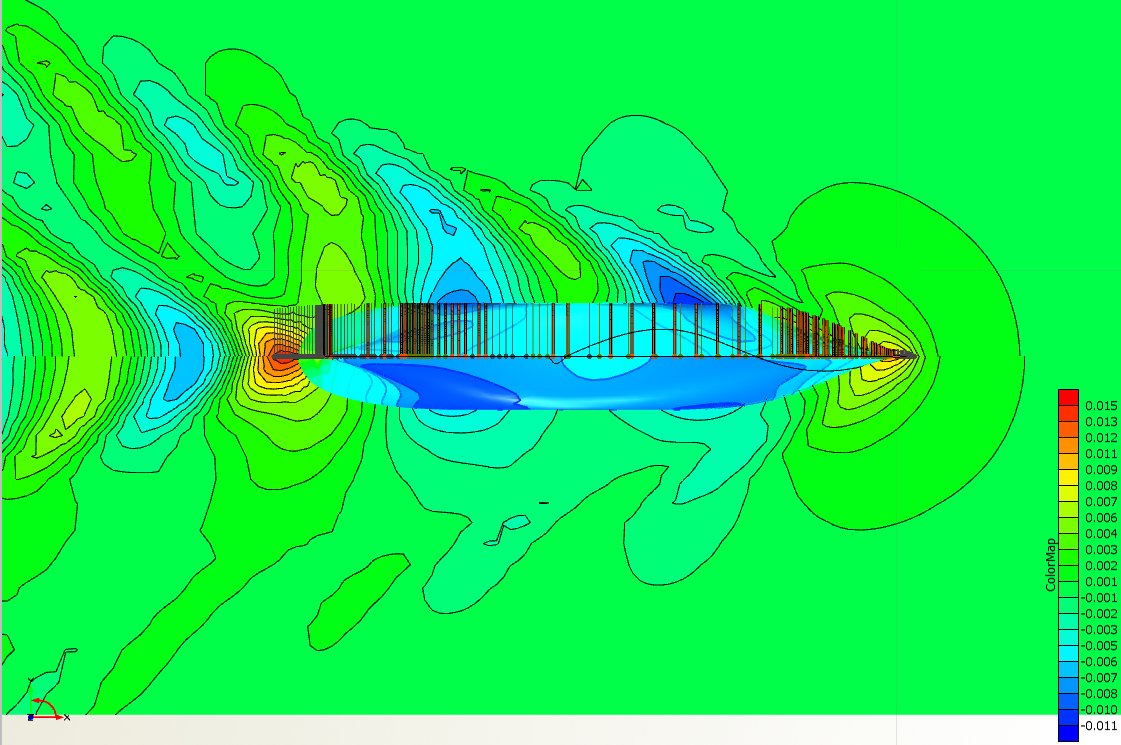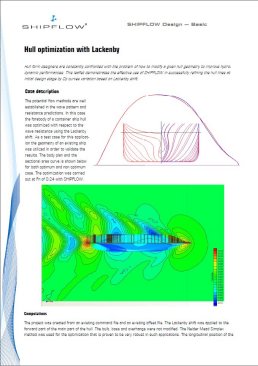Automatic optimization of a ship forebody for wave resistance
Hull form designers are constantly confronted with the problem of how to modify a given hull geometry to improve hydrodynamic performances.This leaflet demonstrates the effective use of SHIPFLOW in successfully refining the hull lines at initial design stage by Cp curves variation based on Lackenby shift.
Case description
The potential flow methods are well established in the wave pattern and resistance predictions. In this case the forebody of a container ship hull was optimized with respect to the wave resistance using the Lackenby shift. As a test case for this application the geometry of an existing ship was utilized in order to validate the results. The body plan and the sectional area curve is shown below for both optimum and non optimum case. The optimization was carried out at Fn of 0.24 with SHIPFLOW.
Computations
The project was created from an existing command file and an existing offset file. The Lackenby shift was applied to the forward part of the main part of the hull. The bulb, boss and overhangs were not modified. The Nelder Mead Simplex method was used for the optimization that is proven to be very robust in such applications. The longitudinal position of the center of bouncy was chosen as a design variable and was varied in the range between -0.3% to +0.3% of the Lpp. The wave resistance was evaluated as an objective of the investigation. The calculations were run in a fully automatic manner and the results were stored as separate design variants. The results were also summarized in a table form for easy comparison. The wave pattern was analyzed in the 3D view of the inbuilt post-processor.

Results
Since the original hull form was already designed for the speed in this case, it was expected that the optimized geometry from SHIPFLOW should not deviate too much from it. The optimization was started from the low bound for the design variable which was far from the original design. It was found that the Simplex method approached the minimum in only few steps and the result corresponded to the original design. The history of the design evaluations is presented in the graph below and shows very good convergence and robustness of the calculations. The wave pattern was also analyzed and the significant improvement is also visible there.
Concluding Remarks
SHIPFLOW Design Package can provide very efficient capabilities for selecting the best forebody design based on Lackenby shift and an optimization module. The user interface supports designer work by integrating pre and post processing capabilities. The hull form modification, optimization and CFD tools are combined into one package to create an efficient design environment.


